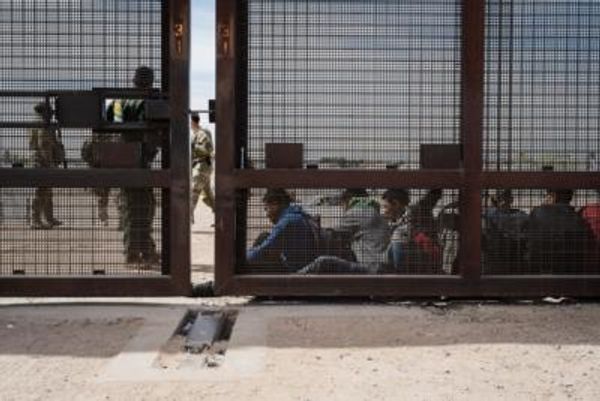
You could be forgiven for thinking that CEOs are a bit relieved by the events of 2023. The long-predicted recession has not manifested (at least, not yet), while a "new normal" of hybrid work has settled in, with remote employees largely back in offices regularly between Tuesdays and Thursdays. And then the historic collapse of Silicon Valley Bank in early March, although it initially sent ripples through the Bay Area, D.C., and Wall Street, did not metastasize into the kind of contagion that sets off a financial crisis. Kevin O'Leary, though, the Shark Tank star and chairman of O'Leary Ventures, sees a different landscape—a bad one.
As watchers of the hit ABC series (and its Canadian predecessor, Dragons' Den) know all too well, "Mr. Wonderful" is a successful investor in hundreds of small businesses, so he knows from up-close practice what the regional banks aren't advertising widely: They have stopped lending. Capital call requirements resulting from commercial real estate distress, he told Fox Business host Larry Kudlow on Sept. 15, are “causing chaos.” At the same time, he noted that the Internal Revenue Service has issued an immediate moratorium on employee retention credit claims for small businesses. O'Leary said that, as far as he knew, that was the only active program where businesses could get capital right from the government, and now it's been shut down. The pandemic-era relief program was halted amid rising concerns of fraudulent claims, according to the IRS, although it's one of many similar programs that have ended. For parents, the end of subsidies to childcare facilities has become known as the "childcare cliff."
“I’ve got over 800 of my companies that applied for this," O'Leary told Kudlow, adding that they've been invaluable: "Over half of them received their money—in some cases, it saved them.” Later in the interview he concluded that “These programs are not aligned, they’re not in sync. So we’ve got the pressure at the regional banks, [a] commercial real estate collapse, and small business not getting any capital. This is all bad news.”
The 'correction' ahead?
O’Leary said the distress showed up on his radar about nine months ago, in conversation with Kudlow, the former director of the National Economic Council under former President Donald Trump, because so many of the companies in his portfolio are small businesses that use regional banks. A "correction" is the only conclusion, O'Leary said. What shape that takes is far from certain, though.
“We’ve got to refinance these buildings and many of them have no equity left in them,” O’Leary said, given that remote work has hollowed out so many downtowns nationwide. “So these banks are going to fail because up to 40% of their portfolio, I’m talking regional banks here, are in commercial real estate.”
The national office vacancy rate reached 16.4%, as of the second quarter of this year, which is slightly higher than the prior peak seen at the height of the Global Financial Crisis, according to Collier's. In some markets, Los Angeles, Manhattan, and San Francisco, that vacancy rate is much higher. And some of those empty office buildings, O’Leary said, can no longer be used as offices because the economy has changed. With small businesses in particular, O’Leary said, a lot of their workers don’t go into an office anymore, which is why they have to be repurposed.
The question is, he said, who’s going to pay for that, particularly when it could be up to $1 trillion, O’Leary estimated. All he could conclude is that big challenges, and likely even bigger problems, lie ahead, and they will manifest across regional banks over the next three years.
O’Leary continued, adding that most of these buildings have interest rates that are less than 4% on five- to seven-year mortgages, or worse, have floating-rate mortgages. Because the Federal Reserve has raised interest rates several times over the past year in its attempt to lower inflation, buildings that need refinancing will be refinanced at much higher rates, say 9% to 11%, O’Leary said, which sends costs up, making some of those buildings no longer economically viable.
O'Leary's comments are echoed widely among financial commentators. On Friday, for instance, Ed Yardeni, the Wall Street legend and founder of Yardeni Research, sounded a similar tune on Bloomberg TV: "Something is breaking right now, and that's in the commercial real estate market. There's going to be a lot of things breaking in the commercial real estate market, and I think it's one of the reasons the Fed is probably done raising interest rates."
Yardeni noted that with the bond yield up close to 5%, "that's a disaster for a lot of commercial real estate deals that have to be refinanced, or the value of commercial real estate." He said it reminded him of the early 1990s, when "a lot of things broke in the commercial real estate market" after the savings and loan crisis, an event that many compare to the Silicon Valley Bank collapse.
O'Leary, for his part, sees a long and difficult road ahead. “You have to take an old office and turn it into a climate-controlled storage or condominium,” O’Leary said. “But in cities like New York, where it’s decimated, those double-B buildings are just empty, you can’t do that without zoning changes. And, policy there is very difficult, so it may be better long-term…to actually tear these buildings down and rebuild.”







